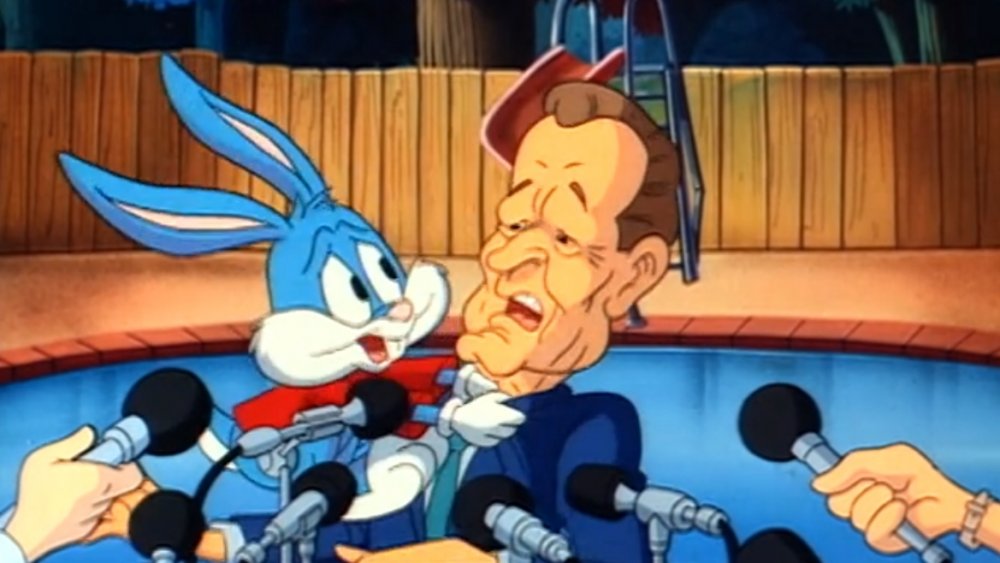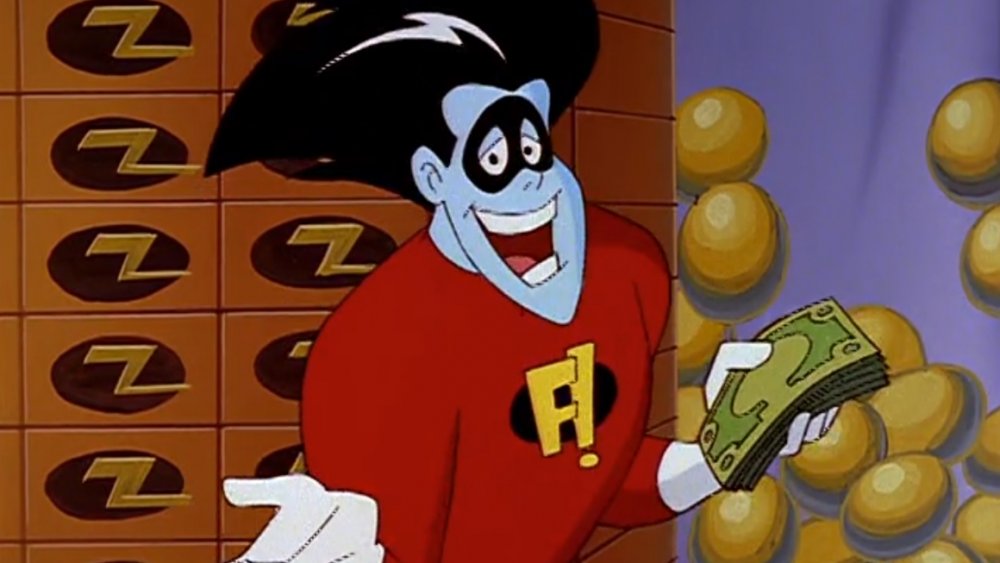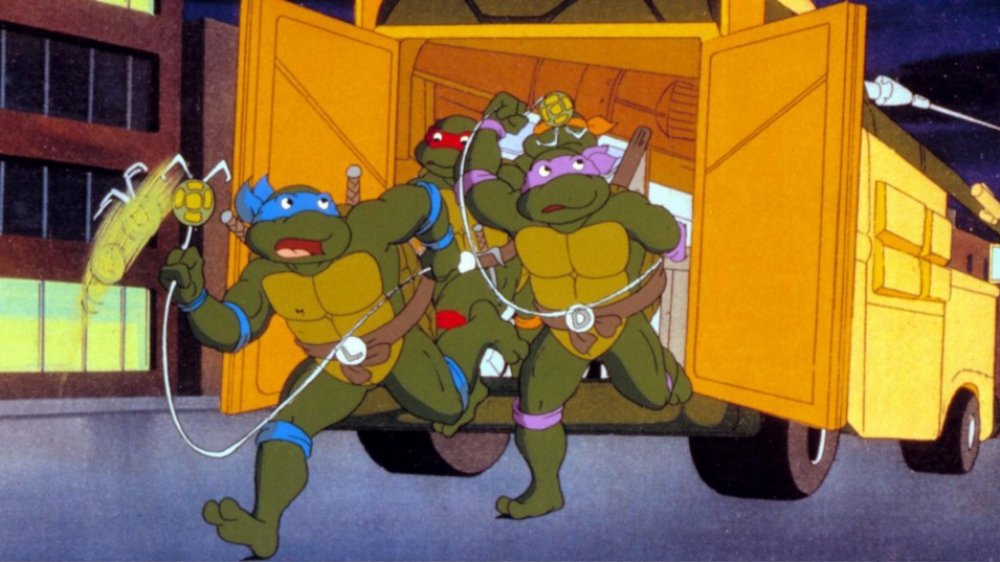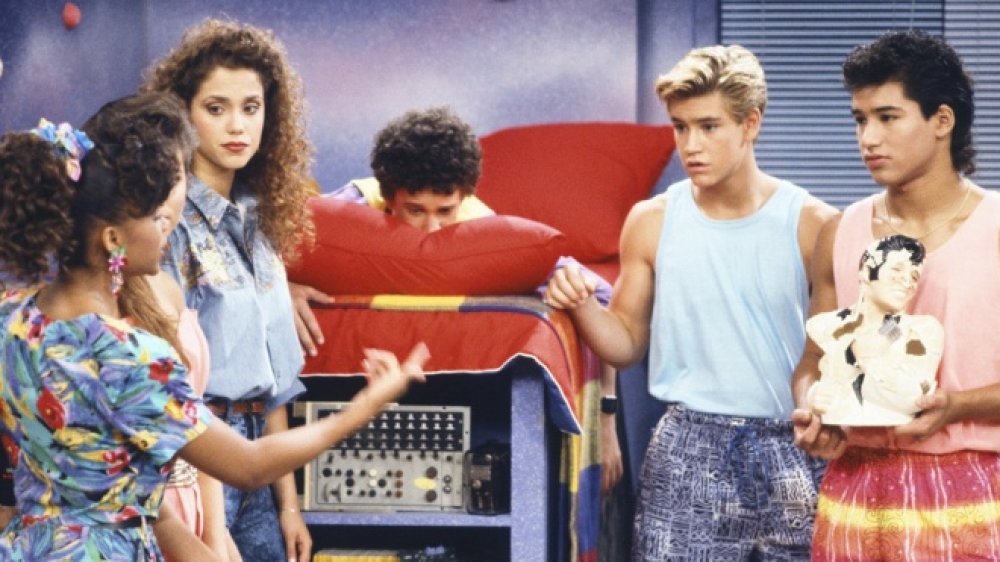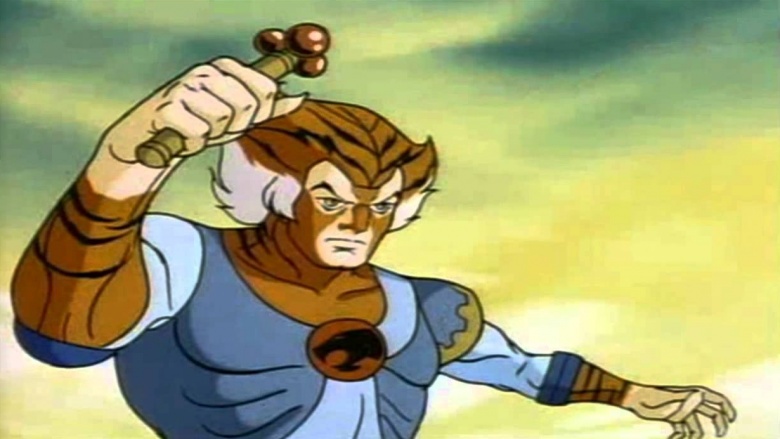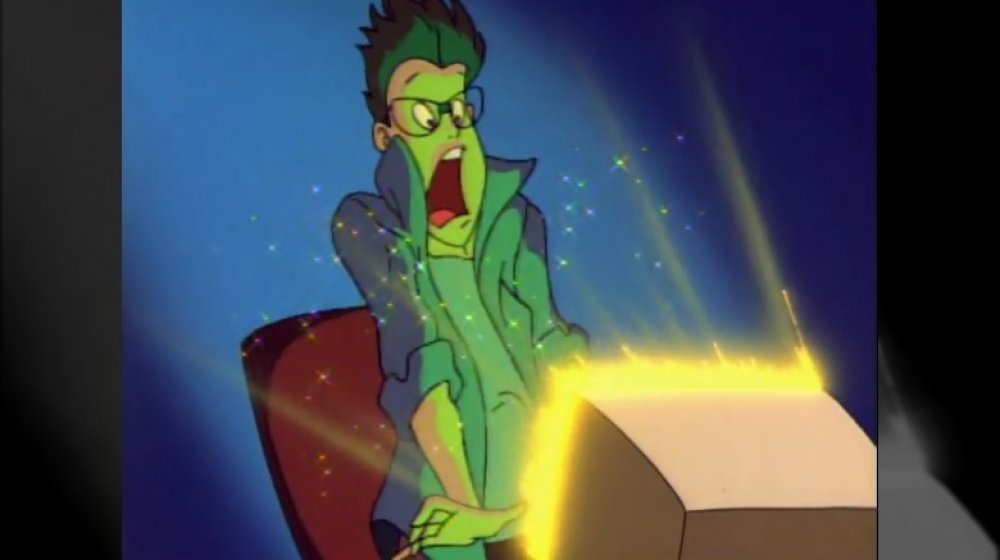The Real Reason Why Saturday Morning Cartoons Disappeared
Kids today don't know the glorious experiences they're missing. Back in the day, Saturday morning was the best time of the week. You'd get up early, and you'd be happy about it. You'd pour yourself a huge bowl of sugar disguised as cereal (and never disguised as nutrition). Then you'd turn the TV on, and let it assault you with a barrage of cartoons until noon ... or whenever American Bandstand or Soul Train or golf came on. Then you'd go back to whatever children did before they had cell phones to stare at.
But over the past couple decades, the big broadcast networks have slowly stopped offering a Saturday morning lineup. (Unless you count infomercials and multi-level marketing schemes, which, seriously, those things are fun, but only when you get in on the ground level.) What became of this American institution of color and cackles? Let's find out.
The government did it
In 1990, Congress passed the Children's Television Act. Among its guidelines that broadcasters had to follow: a minimum of three weekly hours of programs that had educational or informational merit. When asked nicely to do that, broadcasters, not surprisingly, didn't change much of its children's programming at all.
So in 1996, the FCC decided to more aggressively enforce the CTA. As a result, networks had to quickly throw some learnin' material on the air, which they relied on syndicated television packagers to produce. As for when to actually put it on the air, more than a third of local stations initially selected Saturday mornings, as they weren't actually required to air network shows during that time. Also, that's when kids were most likely to be watching, meaning they were halfway there to school anyway.
Thus began the slow-but-steady replacement of silly and/or violent cartoons with travelogues hosted by overly energetic young hosts, and a never-ending parade of shows about animals and how interesting they supposedly are.
The Children's Television Act of 1990 greatly reduced advertising
Another part of the Children's Television Act increased regulations on advertising to children. The Act limited the amount of ads on weekend kiddie TV to no more than 10.5 minutes per hour, which meant a half hour-cartoon would cost more to produce. After all, it now had to be around 25 minutes in length, rather than the standard 22 minutes. (all ads were impacted, so padding time by shilling for Metamucil during Garfield and Friends wasn't allowed either).
But the real problem for the networks here, was that a lack of ad breaks meant less ad space they could sell. Less ad space = less money, which went against the broadcast networks' intent to make as much money as possible.
The networks realized they could make more money with news and sports
In 1988, NBC president Brandon Tartikoff noticed that Saturday morning cartoon ratings were slipping, even for juggernauts like The Smurfs. So, he began exploring other options for the time period. At the time, the average Saturday morning cartoon cost $300,000 to produce (Smurfs are apparently very expensive). Tartikoff and his team did some number-crunching and found that it would be much cheaper to air news programs, or extend Today to the weekend. Four years later, in 1992, that's exactly what NBC did.
The network also realized that it could run sports on Saturday mornings (which had already annoyingly preempted cartoons on the West coast for years). In 1991, the network signed a five-year deal with Notre Dame to air the college's home football games on Saturdays. The contract cost NBC $38 million, which works out to a little over $1 million a game. That's still cheaper than producing six hours' worth of cartoons (six hours of which would've run networks around $3.6 million). Plus, NBC could charge more for advertising during sports (beer, motor oil, more beer) than it could for with cartoons, and do so over way more ad breaks than were allowed for children's programming.
Selling Saturday mornings to syndicates proved an easy way to make money
By the early 2000s, neither ABC or CBS was producing their own Saturday morning content at all, leasing out the time period instead. Until 2002, ABC aired a block called "One Saturday Morning," until replacing it with shows that had previously aired on their corporate sibling, Disney Channel. CBS handed off its precious Saturdays to Nick Jr.'s shows for preschoolers and babies. Fox held on until 2008, when it gave over a big part of Saturday mornings to "Weekend Marketplace," an umbrella title for a block of infomercials. Sorry kids, no more X-Men, but you won't believe how this mop cleans!
Disney-owned ABC got rid of its lineup of Disney Channel reruns and sold the time period to Litton, a syndicator of low-budget educational television (travelogues and animal shows). By 2014, the only channel with its own branded Saturday morning content was the CW with "Vortex," a block of anime-type shows like Sonic X and Dragon Ball. In 2014, it too disappeared in favor of One Magnificent Morning, which is, of course, a bunch more animal shows.
We're starting to think Mother Nature killed off Saturday morning cartoons, not greedy executive types.
Cartoons became an after-school thing
Cartoons, and kiddie programs in general, were scant in the old-timey TV landscape. In the dark days of four channels, kids were lucky if they got even one show just for them. In the '50s and '60s, it was mostly stuff like Captain Kangaroo in the morning, The Mickey Mouse Club in the afternoon, and some locally produced show starring some guy dressed like a cowboy, clown, or pirate playing old cartoons. The rest of daytime TV was firmly occupied by what did well in the ratings, and what sponsors threw their money at: game shows and soap operas.
But as tastes changed in the '80s and '90s, the holes were filled in by very syndicated cartoons. While many were little more than half-hour commercials for toys, it's undeniable that He-Man: Masters of the Universe, G.I. Joe, Thundercats, and the ilk were totally awesome. Usually produced by the same animation houses that made Saturday morning cartoons (by which we mean "cheaply"), Saturday morning-style cartoons suddenly became competition for homework, being available each and every weekday. This is to say nothing of the enduring popularity of Disney's syndicated cartoon block, The Disney Afternoon, into the '90s. Saturday morning was no longer the only game in town.
Blame cable TV
That all being said, you'll notice your local stations and network affiliates don't even play many cartoons in the afternoon anymore. That's because, as daily cartoons diminished the novelty and importance of Saturday mornings as the primo cartoon destination, so too were daily cartoons' existence rendered moot by cable TV.
By the mid-1990s, the majority of American homes were equipped with a magical box that brought into the home dozens of niche channels, including multiple ones that showed nothing but cartoons and other kid stuff all the time, no "interesting" animals need apply. With its almost endless offerings, Disney Channel, Cartoon Network, Nickelodeon, (and offshoots like Disney XD, Boomerang, and NickToons, respectively) made everyday feel like Saturday morning, all day long. The piecemeal of both syndicated cartoons—and the old stalwart of Saturday morning— just couldn't compete with cable's all-you-watch cartoon buffet.
The Internet did it
Today, all of those cable channels (and more) continue to churn out animated material, but the world of TV and how it's consumed continues to evolve. A lot of those cartoons are now available on low-cost streaming services like Hulu, Netflix, Amazon Prime, and the cable networks' own websites and apps. Kids (and, let's be honest, adults) can watch cartoons whenever they want, wherever they want. They don't have to be parked in front of a TV on Saturday morning at 8 a.m. sharp to see brightly-colored cartoon characters zig-zag across the screen.
Kids definitely still watch cartoons on Saturday morning, but now they can watch say, Sanjay and Craig on Hulu at 8:14, on their phone, without even getting out of bed. Sorry, Saturday morning network cartoon block: you just can't compete with the American Dream.
